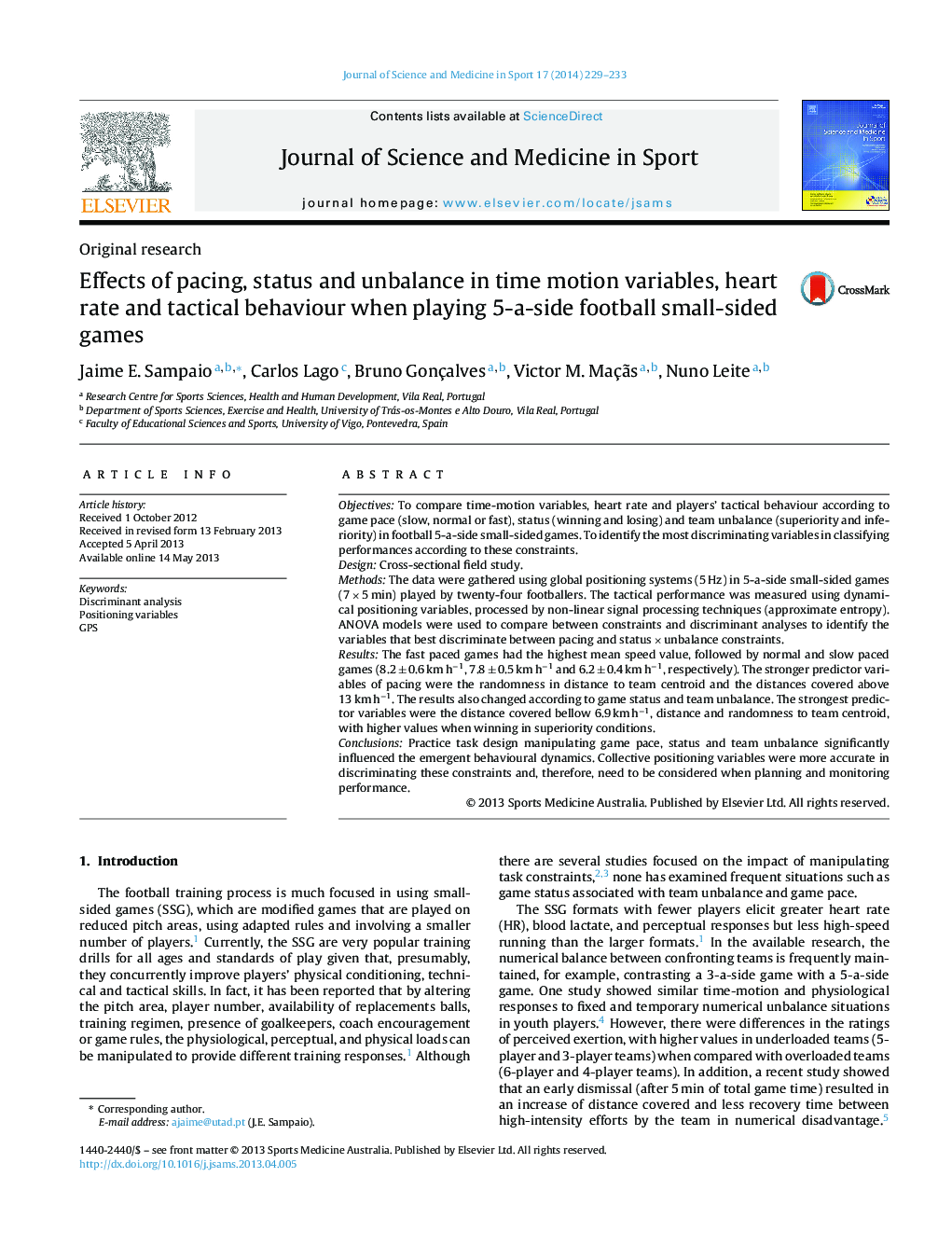| کد مقاله | کد نشریه | سال انتشار | مقاله انگلیسی | نسخه تمام متن |
|---|---|---|---|---|
| 2704529 | 1144687 | 2014 | 5 صفحه PDF | دانلود رایگان |
ObjectivesTo compare time-motion variables, heart rate and players’ tactical behaviour according to game pace (slow, normal or fast), status (winning and losing) and team unbalance (superiority and inferiority) in football 5-a-side small-sided games. To identify the most discriminating variables in classifying performances according to these constraints.DesignCross-sectional field study.MethodsThe data were gathered using global positioning systems (5 Hz) in 5-a-side small-sided games (7 × 5 min) played by twenty-four footballers. The tactical performance was measured using dynamical positioning variables, processed by non-linear signal processing techniques (approximate entropy). ANOVA models were used to compare between constraints and discriminant analyses to identify the variables that best discriminate between pacing and status × unbalance constraints.ResultsThe fast paced games had the highest mean speed value, followed by normal and slow paced games (8.2 ± 0.6 km h−1, 7.8 ± 0.5 km h−1 and 6.2 ± 0.4 km h−1, respectively). The stronger predictor variables of pacing were the randomness in distance to team centroid and the distances covered above 13 km h−1. The results also changed according to game status and team unbalance. The strongest predictor variables were the distance covered bellow 6.9 km h−1, distance and randomness to team centroid, with higher values when winning in superiority conditions.ConclusionsPractice task design manipulating game pace, status and team unbalance significantly influenced the emergent behavioural dynamics. Collective positioning variables were more accurate in discriminating these constraints and, therefore, need to be considered when planning and monitoring performance.
Journal: Journal of Science and Medicine in Sport - Volume 17, Issue 2, March 2014, Pages 229–233
